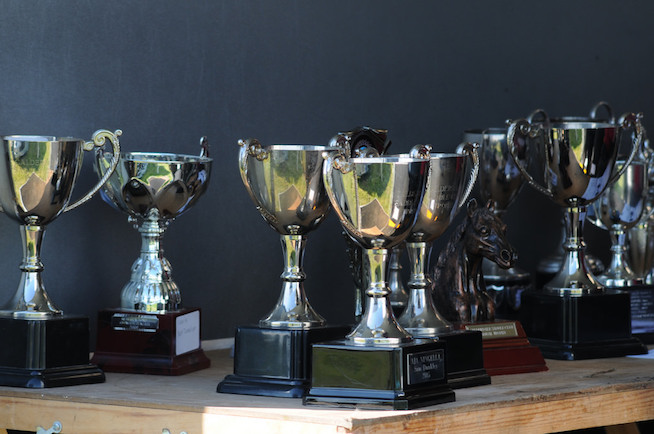
Every business needs a fired-up, hyperactive sales team to make big profits. When your sales team is starting to get complacent and the numbers start dropping, consider a strategy that can get your people back in the game, literally.
This strategy is called Gamification.
Business experts claim it is the next big thing to rock the sales and customer engagement field. Through gamification, businesses can drive their sales higher by motivating the people who do the sales to do better and win the game.
What is Gamification?
Gamification is the application of game concepts, dynamics, and mechanics to non-game situations. It is a strategy used to influence the behavior of the user towards generating higher accuracy and productivity. This strategy has progressively evolved in business and is now applied to boost sales and improve customer relationship management (CRM).
The idea behind gamification in sales is simple. Turn sales processes into games and the people involved in the sales processes will change as well. Games are made to be won, and this lone goal, as simple as it sounds, can make people do extraordinary things. As work and play mix, behavior alters to reveal more competitive and motivated people.
What Denise Pombriant of Beagle Research wrote in an article for CRMSearch.com sums up the major benefit of injecting games into the business cycle:
“If you make the interaction fun and rewarding and thus build loyalty there is less need for more draconian customer or account control. Games can get customers to do your bidding—to a degree—without coercion.”
The word “gamification,” and all that it aspires to do, may sound too good to be true. There have been criticisms against gamification and the negative impact it may have on work culture in the long-term. Some say that gaming everything can lead to an addiction to instant gratification, making employees short-sighted. Others think that gamification is just hype, and don’t believe that it can stay in the business for good.
Fast forward to a couple of years, and here we are with a thriving market for gamification software. Bob Marsh, CEO of one of the most popular gamification software LevelEleven, thinks gamification is a viable strategy that has to be coupled with good management for optimum results.
“The key to successful sales gamification is understanding when and how to apply it so sales teams focus on meaningful behaviors that address key business objectives. Think of the oldest sales management trick in the book: the sales contest.”
People are wired to be competitive, and businesses can benefit from this intrinsic human character in many ways.
- Gamifying the company’s sales practices provides employees with objective measures of their own and their co-employees’ competencies.
- The competition will inevitably drive sales activity up, generating more conversions.
- Employees are more likely to try new and risky sales tactics to get ahead of the game.
- The gaming also increases excitement and camaraderie in the office, especially when the management holds team events.
Using gamification to manage salespeople can yield great results for businesses, and implementing one does have to cost the company big-time. Gamification in the sales department can be done through easy to use software that can be integrated with the CRM system.
To make the most out of gamification, choose a software that systematizes engagement to be entertaining and productive at the same time.
An effective gamification software is built with these five elements:
1. Competition System
Take the cue from classic sales contests and start a healthy competition in the office with the help of a gamification software. An effective gamified sales situation can bring out the best among your salespeople, and ingrain the value of meeting targets faster and more efficiently.
A contest, race, or any competitive format asks people to engage in the same activities and reach for the same goals. The participants have two objectives in these situations: to fulfill the game objectives and to stay ahead of the competition.
A good gamification software creates this kind of competitive environment for salespeople by assigning targets or goals, awarding points, and monitoring the progress of each participant. A feature that can help establish the game situation is a leader board where the names and achievements of the top players can be seen displayed, and give glory to those who persevered. Visual cues for rewards can provide additional motivation, as well as customized congratulatory messages.
With a gamified atmosphere, salespeople do not only compete with each other, they also compete with themselves. Such competition with oneself fosters a progressive outlook and a continuous path towards improvement. This is why the player’s progress record is important and must be updated regularly.
2. Infinite Reward Cycle
Why is it so easy to get addicted to games? Is it because of the fun? Or the competition?
All the factors play in the enjoyment of a game, but the main reason people keep on playing games is the reward.
Sales gamification is no different. Aimee Millwood writes in Hubspot.com that the psychology of sales gamification rests on a reward compulsion loop. As Aimee’s term suggests, this does not end with a single reward, or slapping of badges for a job well done. It means that there has a to be a continuous cycle that will increase the value of reward and make every journey to that reward more worthy of the hard work.
To understand how the infinite reward cycle works, think of a computer or video game. A game typically has different levels, each with its own set of obstacles and one major problem that must be overcome to reach the next level. After the player achieves this feat, he/she wins the prize. It could be more HP points, a level-up, or a new weapon to add to the arsenal. He/she then moves on to a higher yet more difficult level that offers greater rewards at the end.
Applying the logic to sales processes, this suggests that rewards should get better as the game goes longer and harder. It is only fair to match a hierarchy of goals with a progressive set of rewards.
A reward is not necessarily tangible in sales gamification. For some it is the recognition that matters, or the knowledge that one is capable that makes the games rewarding. Though these abstract values are important, it still pays to give concrete rewards like special holiday trips or the latest gadgets to motivate employees and raise the stakes.
3. Opportunities for Collaboration
Critics like to think of gamification as the top management’s way of pitting employees against each other in adherence to the natural law of survival. This myth cannot be farther from the real objective. Gamification indeed fosters competition, but at the same time aims to create opportunities for collaboration.
In the conventional setup, salespeople rarely need to work together. A salesman follows on his leads, calls his prospects, and closes the deal usually by himself. Performing as a one-person team is common for salespeople, which is probably why most sales jobs are incentivized with a commission.
With gamification, flying solo will no longer be the sole option. The best gamifying software is flexible for team games, offering people the opportunity to combine their heads and compete as one unit. Team-oriented contests usually involve accumulating the points of every member, putting greater pressure on each individual to perform well so as not to be the dead weight in the team.
Mobile integration and compatibility with other platforms further add to the social value of a gamification software. Sharing victories and keeping tabs on people’s progress increases the excitement around the games and brings the salesforce closer together. It can even lead to collaborative efforts between unlikely parties.
4. Real-time Reportage
Excitement is not a feeling we usually generate from the inside. Excitement is often a reaction to some external factor. It is something that taps into our subconscious and makes us react almost instantly.
In gamified sales, that trigger would be real-time updates on the status of the sales. Gamification software should be able to release real-time updates and send them to emails or social accounts to keep all the competitors apprised of the situation. These alerts can include information such as recent deals made and other sales milestones.
People on both ends of the competition will appreciate these alerts in different ways. Those who are lagging behind may feel the urgency to act, and drive them to double their efforts. The ones at the lead, on the other hand, will feel gratified and further motivated to stick to the top spot. Either way, what these real-time updates do is inspire the sales team to work harder and turn in more conversions.
5. Progress database
All the achievements gained through sales gamification will not impact the office unless salespeople understand how far they have gone. To comprehend how the quantitative changes are leading to qualitative results, the performance of the sales team should be analyzed at the individual and organizational level.
Compiling data and turning them into usable statistics are important functions that all gamification software should have. These numbers provide the concrete bases for evaluation and further strategizing for the sales team. On the individual level, it gives a sales person the satisfaction or reviewing his/her progress, which can be considered a reward in itself.
From start to finish, gamification presents new and exciting things that can keep the salespeople both occupied and excited. The excitement does not solely come from the prospect of winning prizes, a part of it also comes from the challenges that the games will present. Salespeople thrive in pressure, and a gamified environment can be the perfect situation to test and further hone their skills.
Venturing into gamification is definitely rewarding for businesses. Throughout the process, the business will observe increased productivity, renewed passion, and stronger bonds between employees. With the right tools and mindset, businesses will get the ultimate reward for daring to gamify sales—huge returns earned by a zealous and motivated sales force.
This article is originally published at Tenfold.
Read More:
- Case Study – Creating Highly Engaging Corporate Compliance Training With Gamification
- 5 Examples Of Gamification Strategies For Corporate Training
- Gamification In Sales: Leaderboard Best Practices that Power Up Employee Engagement
- 5 Killer Examples On How Gamification In The Workplace Is Reshaping Corporate Training
- Free eBook: How Gamification Can Increase The Impact Of Your Compliance Training



